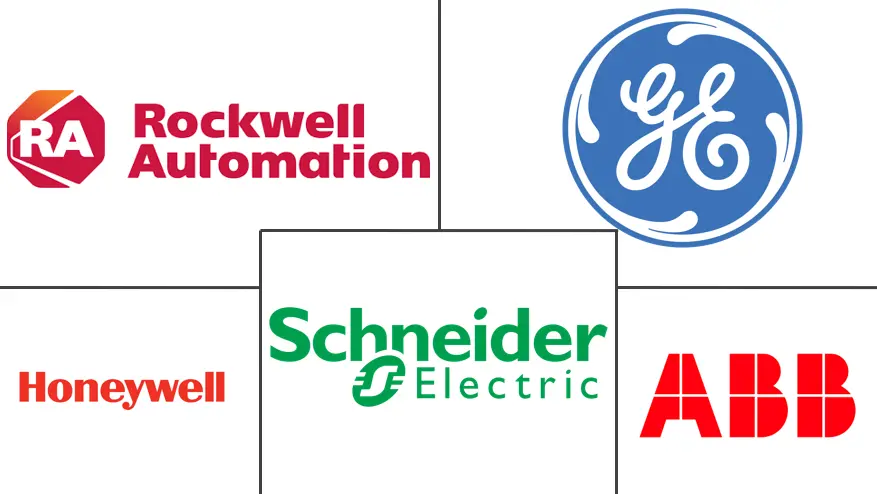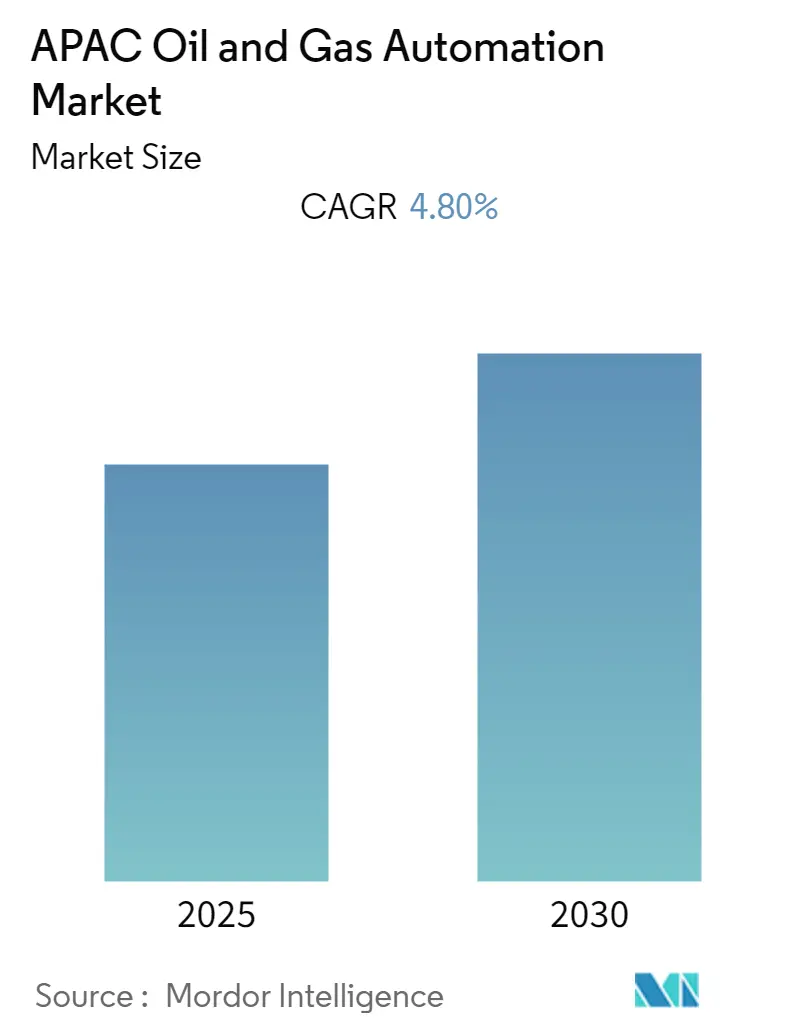
APAC Oil & Gas Automation Market Analysis by Mordor Intelligence
The APAC Oil & Gas Automation Market is expected to register a CAGR of 4.8% during the forecast period.
- Automation is being adopted across several industries to make an immediate and lasting difference, particularly in a large industry like the oil and gas sector. The oil & gas industry has begun the move toward digitization with more sensors accumulating data from rigs worldwide. However, there are still some untapped areas where companies can improve within an increasingly diverse market. Employing digital technologies can help engineering teams work more efficiently with oil and gas companies to manage data and project requirements better, improving internal communications and simplifying planning.
- Furthermore, in countries like India, there is a severe need to double the country's refining potential by 2040 to suffice growing fuel demand as passenger vehicles increase. However, downstream companies such as BP (India) have no plans to build new refineries despite growing oil production. They are expected to focus on modernizing existing plants while expanding their network of filling stations to generate USD 3 billion in additional cash.
- Declining sensor costs could also offer several cost-cutting measures to implement automation technologies in the oil & gas industry to improve productivity and eliminate any possible hindrances in the business model.
- However, according to the Digital-Re-Definery report released in the past year, the number of refiners that reported digital technologies delivering a margin improvement of more than 10% in refining operations dropped from 11% to 3%. The numbers also dropped for all subsequent margin improvement ranges. This underscores the fact that there is considerable potential for improvement as Oil and Gas Refineries are yet to capitalize ultimately on digital investments.
- Additionally, the oil & gas industry is suffering from a skilled labor shortage. The shallow talent pool has made it complicated for oil & gas companies to hire new employees with the technical skills required to work on new energy sources. Moreover, stress with the oil prices declining over 2020, in the wake of COVID-19 & price war between Saudi Arabi and Russia, is expected to drive the oil-producing companies to improve their production efficiency and dive the demand in the sector.
APAC Oil & Gas Automation Market Trends and Insights
Digital Technologies to increase the production efficiency
- As Industry 4.0 technology emerges in the oil and gas sector, solution providers are introducing additional sensors or controllers that need to replace existing controllers before realizing the benefits of the upcoming digital technologies.
- For example, companies are developing and deploying additional sensors to measure pressure, temperature, vibration, and flow in the underground area or at or near the wellhead. This solution involves sending large datasets to the cloud over IoT gateways and hubs. In the cloud, data scientists build AI-based machine learning models. This requires a significant capital investment, but as mentioned above, it is currently severely restricted.
- A significant proportion of artificially lifted wells already have sensors and automation equipment installed in the last few decades or earlier. However, the problem is that the controller performs only essential control functions. This provides sufficient computational power to perform the simple functions of operating an artificial lift device with the preset operating settings specified by the operator or production engineer using SCADA software.
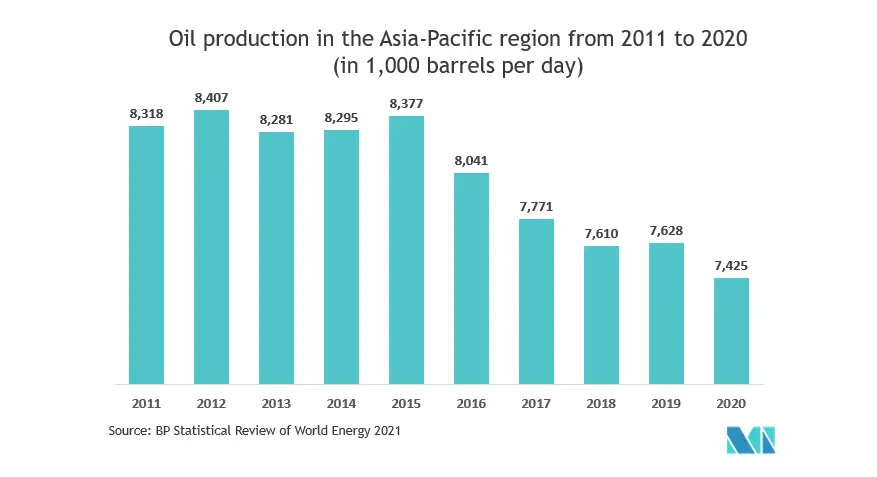
Increase in the consumption of Oil is pushing for automation
- To keep up with such increasing demand, companies are often turning toward automation strategies to maintain high efficiencies of their production environments. Hence, compared to all three streams of oil and gas, the penetration of automation is comparatively high in the downstream sector.
- Gas demand is estimated to have declined by 2.3% in 2020, much like what the market saw in 2009 after the financial crisis. Consumption declined in most regions except China, where gas demand increased by almost 7%.
- In the downstream sector, the efficiency of the assets determines the return on investment (ROI) factors. The turnaround schedules of the refineries that last for at least three to five weeks in some cases demonstrate the importance of maintaining these assets.
- Over the forecast period, the industry is expected to witness a considerable increase in the number of IoT solutions and predictive maintenance systems combined with SCADA, PLC, and HMI systems.
- Automation technologies may dramatically enhance productivity and efficiency while also helping the industry maintain high production output. For example, consider countries like the United Kingdom, where technology penetration is considerably high in the oil and gas sector.
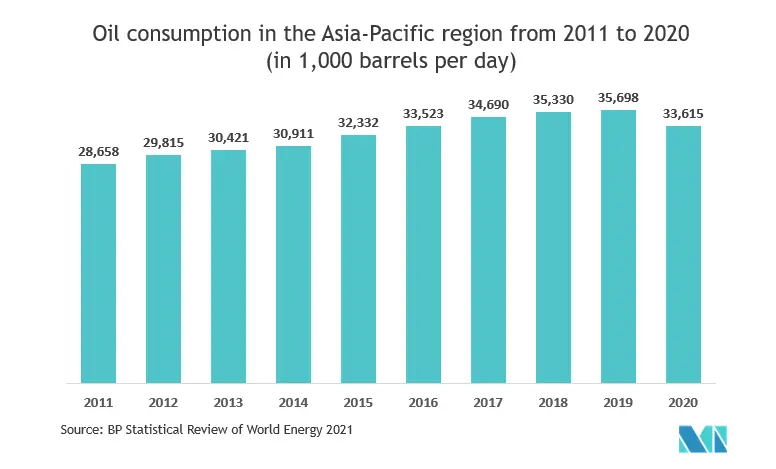
Competitive Landscape
The oil and gas automation market is highly competitive and consists of several major players. In terms of market share, few of the major players currently dominate the market. These major players with prominent shares in the market are focusing on expanding their customer base across foreign countries. These companies are leveraging on strategic collaborative initiatives to increase their market share and increase their profitability. The companies operating in the market are also acquiring start-ups working on oil and gas automation to strengthen their product capabilities.
- March 2020 - Emerson and Quantum Reservoir Impact announced a partnership to develop and market next-generation applications for artificial intelligence-based analytics and decision-making tools designed for oil and gas exploration and production.
- September 2021 - Automation Anywhere announced a collaboration with Indian Oil Corporation Limited (IOCL) to speed and scale automation to drive innovation across the organization of 30,000 employees. In the first phase of the five-year plan, IOCL will use Automation 360, AI-powered robotic process automation (RPA) platform, to automate critical process choices across departments such as finance, human resources, and inventory.
APAC Oil & Gas Automation Industry Leaders
-
ABB Ltd
-
Honeywell International Inc.
-
General Electric Company
-
Rockwell Automation
-
Schneider Electric SE
- *Disclaimer: Major Players sorted in no particular order
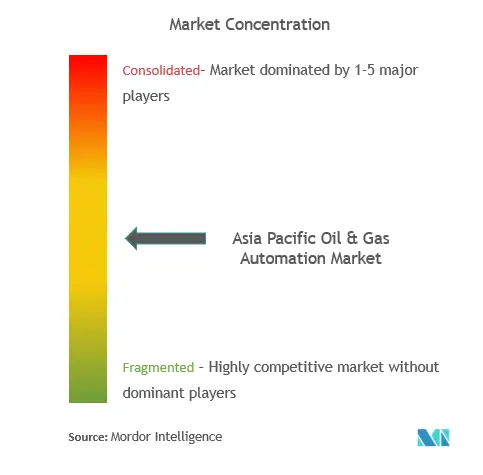
Recent Industry Developments
- November 2021 - ABB exhibited NeoGear and PrimeGear switchgear solutions for the oil and gas sector at ADIPEC 2021. It is designed to improve output efficiency while reducing risk and reducing the environmental footprint. ABB's NeoGear switchgear reduces physical footprint by up to 25% compared to comparable switchgear technology. Within this compact footprint, heat dissipation is reduced, resulting in up to 20% energy efficiency. In addition, new digital features offer up to 30% lower operating costs overall due to more efficient condition monitoring.
APAC Oil & Gas Automation Market Report Scope
Oil and gas, a dynamic global industry, often faces challenges in cost management, extraction of high value from current assets, and maximization of the up-time. Advancement in technology has led to a connected enterprise, which helps the oil and gas industry to move closer to operational excellence. Cloud, mobility, and analytics offer an actionable view into real-time production data.
| Distributed Control Systems (DCS) |
| Programmable Logic Controller (PLC) |
| Human Machine Interface (HMI) |
| Supervisory Control and Data Acquisition (SCADA) |
| Real Time Optimization & Simulation (RTOS) |
| Others |
| Upstream |
| Midstream |
| Downstream |
| Liquefied Petroleum Gas |
| Petrol |
| Diesel |
| Others |
| Asia Pacific | China |
| India | |
| Japan | |
| Others |
| By Automation Technologies | Distributed Control Systems (DCS) | |
| Programmable Logic Controller (PLC) | ||
| Human Machine Interface (HMI) | ||
| Supervisory Control and Data Acquisition (SCADA) | ||
| Real Time Optimization & Simulation (RTOS) | ||
| Others | ||
| By Sectors | Upstream | |
| Midstream | ||
| Downstream | ||
| By Petroleum Derivative Products | Liquefied Petroleum Gas | |
| Petrol | ||
| Diesel | ||
| Others | ||
| By Geography | Asia Pacific | China |
| India | ||
| Japan | ||
| Others | ||
Key Questions Answered in the Report
What is the current APAC Oil & Gas Automation Market size?
The APAC Oil & Gas Automation Market is projected to register a CAGR of 4.8% during the forecast period (2025-2030)
Who are the key players in APAC Oil & Gas Automation Market?
ABB Ltd, Honeywell International Inc., General Electric Company, Rockwell Automation and Schneider Electric SE are the major companies operating in the APAC Oil & Gas Automation Market.
What years does this APAC Oil & Gas Automation Market cover?
The report covers the APAC Oil & Gas Automation Market historical market size for years: 2019, 2020, 2021, 2022, 2023 and 2024. The report also forecasts the APAC Oil & Gas Automation Market size for years: 2025, 2026, 2027, 2028, 2029 and 2030.
Page last updated on:
APAC Oil & Gas Automation Market Report
Statistics for the 2025 APAC Oil & Gas Automation market share, size and revenue growth rate, created by Mordor Intelligence™ Industry Reports. APAC Oil & Gas Automation analysis includes a market forecast outlook for 2025 to 2030 and historical overview. Get a sample of this industry analysis as a free report PDF download.
